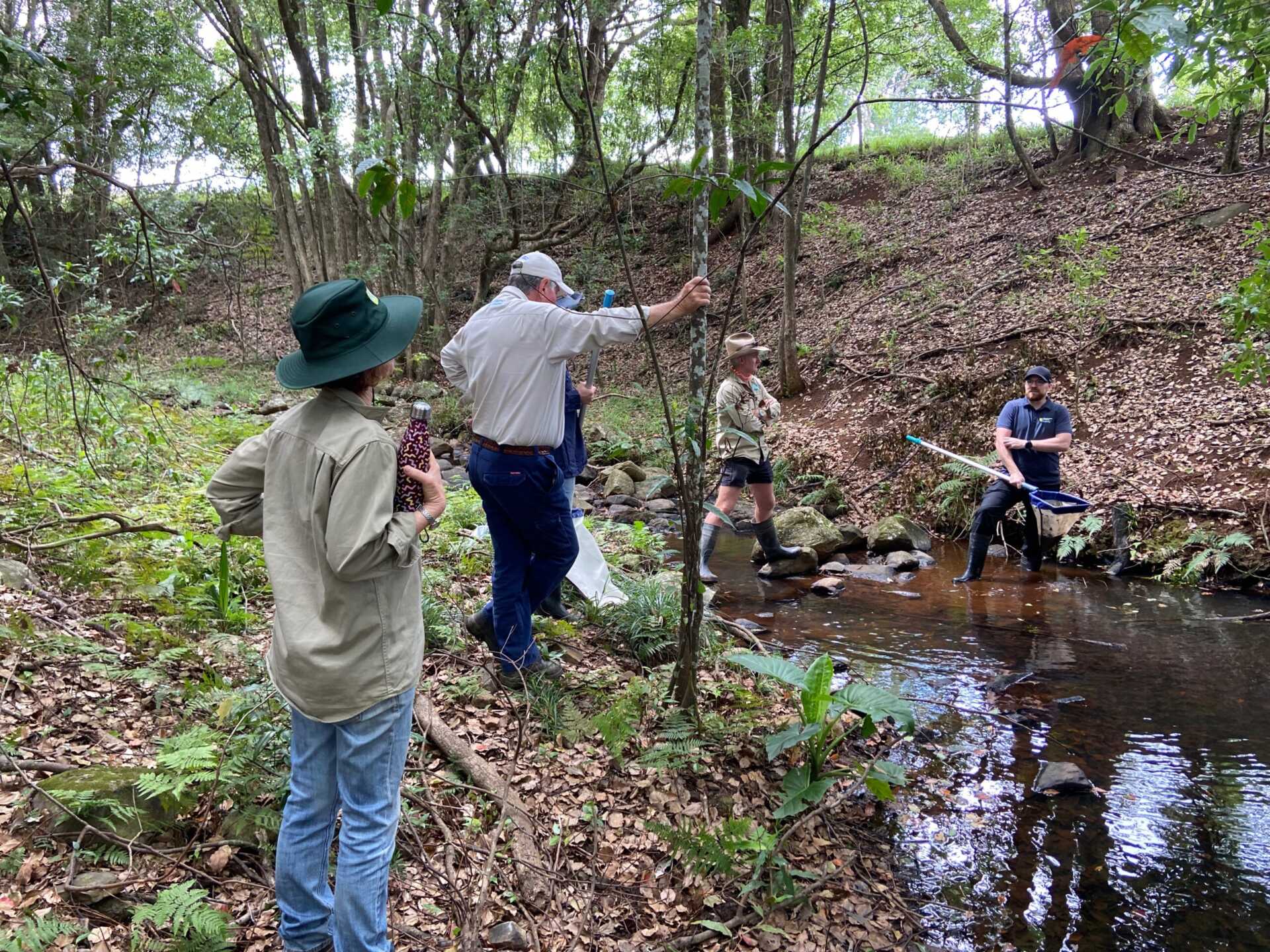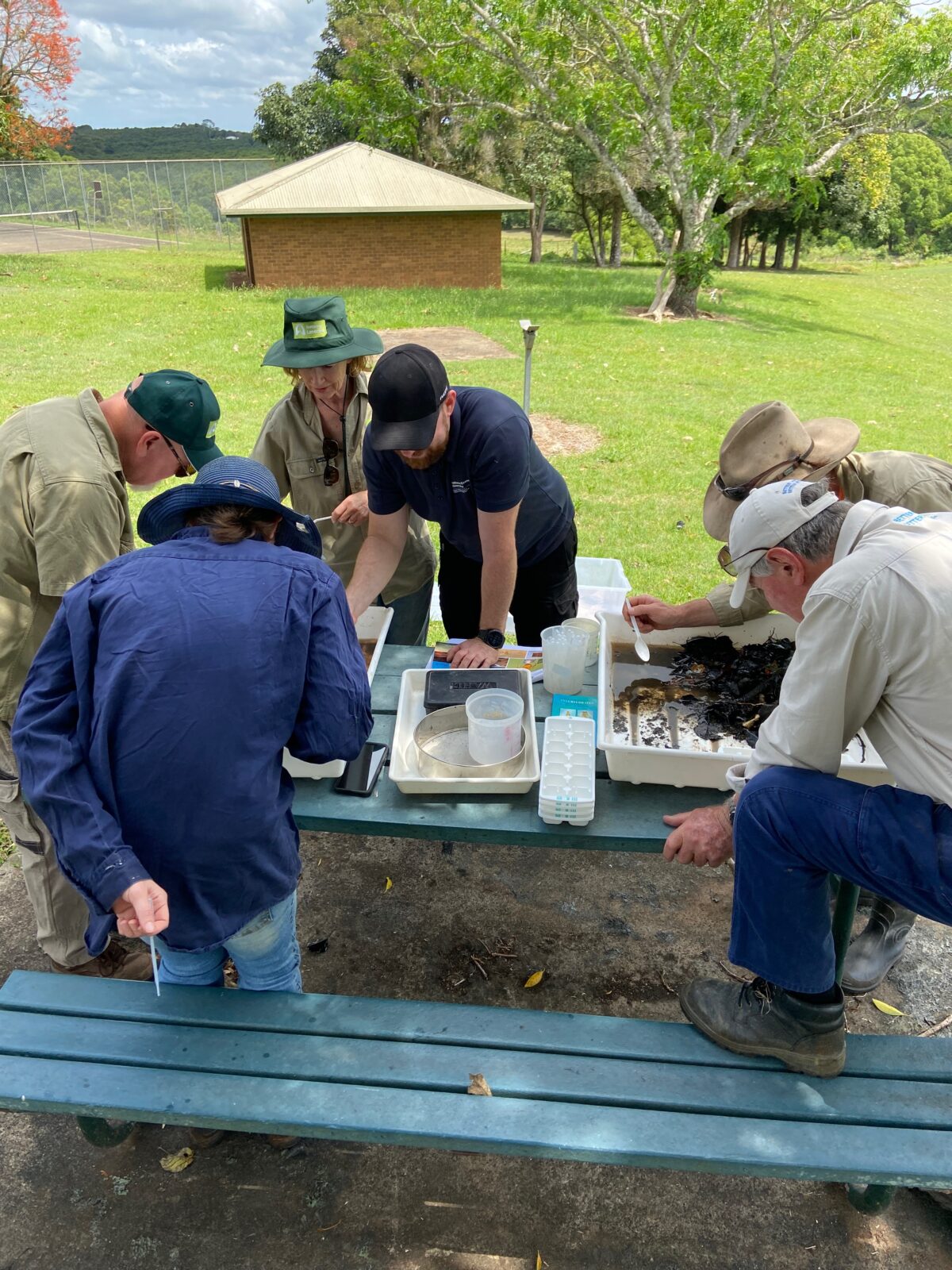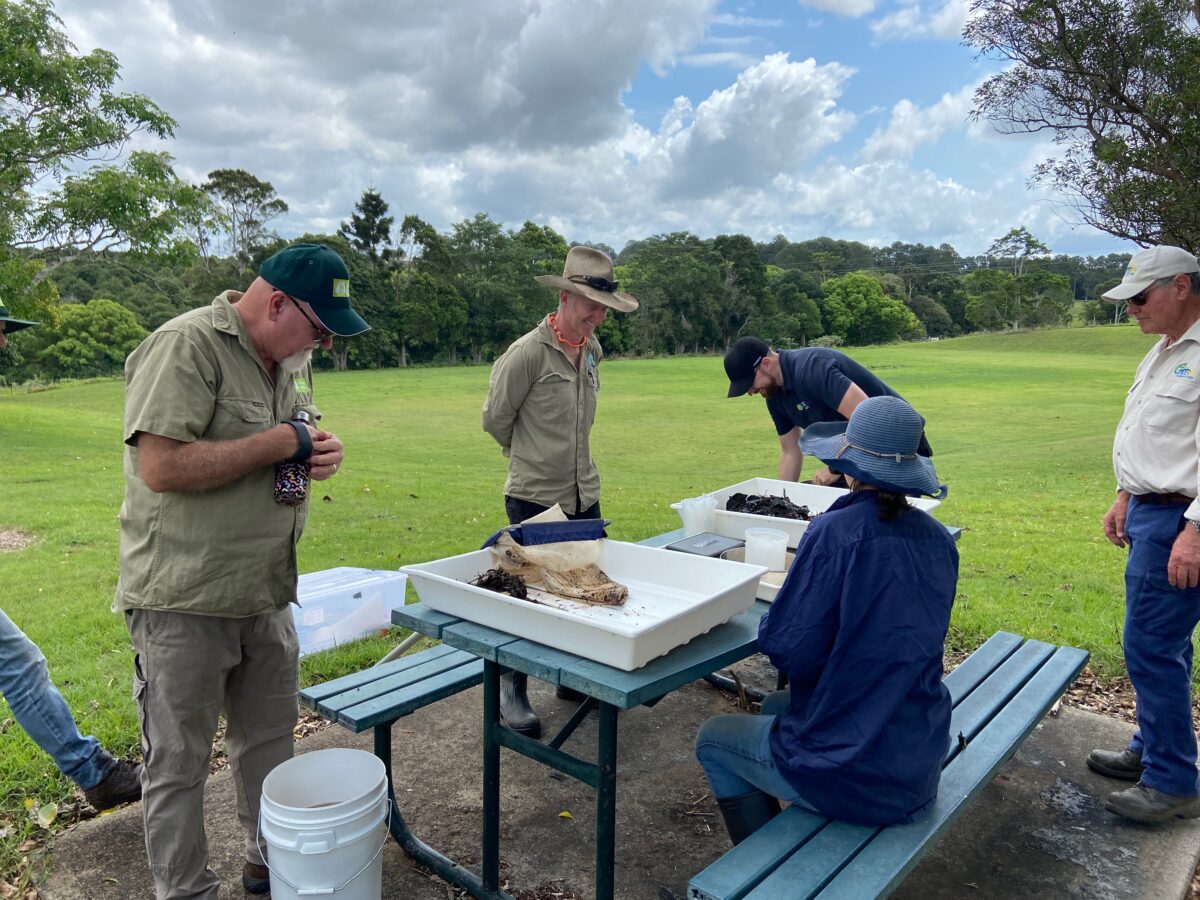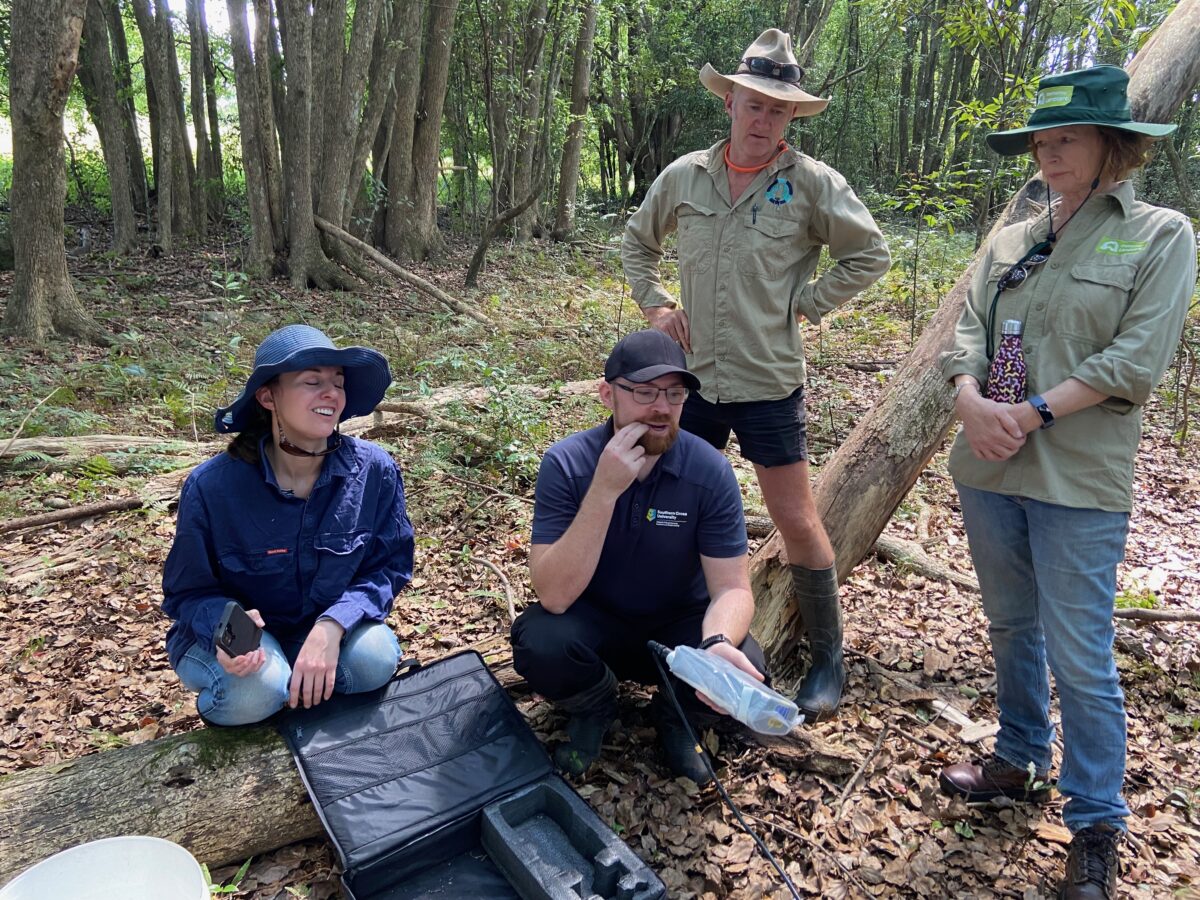Bug day out at Boggy Creek

OzFish Richmond River Chapter and Tregeagle Landcare met up at Boggy Creek recently to share their knowledge of the river and check out how it is responding to habitat restoration improvements.
Tregeagle Landcare looks after the rivers and tributaries in the area. Boggy Creek starts up from the McLeans Ridges flowing through Lindendale and Boggy Creek. The catchment that feeds into Boggy Creek is dominated by macadamia farms, grazing farms and horticulture. Boggy Creek then flows into Tucki Tucki Creek before passing into the Tuckean Swamp and Broadwater waterway. Tuckean Broadwater is the main channel feeding back into the Richmond River catchment.
Tuckean Swamp is vital to local fishers as one of the most significant wetlands in coastal New South Wales. Once dubbed Kakadu of the south for its abundant wildlife, the Tuckean was once an engine room for fish productivity throughout Northern NSW.
OzFish has been working to care for the Tuckean Swamp for some time, and are pleased to have the support of landholders and Landcare in these upper parts of its catchment focused on the water quality entering the Swamp and through to the main Richmond River channel.
One fun and easy way to test water quality are to undertake macroinvertebrate surveys, more commonly known as waterbug monitoring. When counting and identifying the waterbugs we find in the river, we can use scientific guidelines to determine the health of the waterway.
North Coast Project Officer at OzFish Demara Gates, says that by monitoring water quality, we can work to improve habitat and enjoy better fishing in the future.
“In this small training session sample, we found 12 different kinds of waterbugs. The presence of waterbugs in samples represents how the bugs are tolerant of water quality. So water bugs sensitive to poor water quality will not show up in bad water conditions. The waterbugs sampled showed that they were very tolerant of the water conditions, and some showed that they were very tolerant to the water quality (not great, but not good). That tells us the quality of the water isn’t great and could be improved.”
All waterbugs play an essential role in the sensitivity of water quality. The bugs, like fish, are directly affected by physical, chemical, and biological conditions. They cannot escape the pollution and show the effects of short and long-term pollution events and the cumulative impacts of pollution.
Brendan Cox from Southern Cross University visited Boggy Creek to show the group how to sample waterbugs and identify them once caught and sorted for observation.
During sampling, we identified mayfly nymphs that suggest a healthy waterway in this creek area as these waterbugs are extremely sensitive to pollution. Nematode, freshwater shrimp (favorites of Australian bass), needle bug, and water strider that we identified would indicate that these waterbugs are tolerant to some water pollution. As a result, polluted streams are more likely to host water bugs like diving beetle, water treader, freshwater worm, water boatman, backswimmer, bloodworm, and the water strider.
Brendan emphasised the importance of macroinvertebrates in a system.
“You can tell by the macroinvertebrates if it is a healthy system or not. At the river’s edge, if you can see life, that is one indicator that the water quality is fairly good,” said Brendan.
“It is also an indication of a good fishing spot,” Demara responded.
Tregeagle Landcare currently maintains Boggy Creek and are looking at funding to continue monitoring and improving water quality in Boggy Creek. OzFish Unlimited have offered their support.
OzFish Richmond River Chapter President, John Larsson, also showed the importance of water quality sampling using a multimeter and sample regularly in a waterbody.
“We measure a variety of properties to determine water quality. These include temperature, acidity (pH), dissolved solids (inorganic and organic substances), particulate matter (something like dust, dirt, soot or smoke), dissolved oxygen, hardness and suspended sediment. Each property reveals something different about the health of a water body,” said John.
The water quality testing results suggest that the water is within normal ranges for waterway health. It is essential to take a sample of the water quality parameters and water bug testing as it concludes an overall health assessment of the waterway that is being tested.
Riparian areas play a vital role in filtering the water entering our waterways. Sometimes referred to as biofilters, riparian areas are superstars for removing pollutants, excess nutrients, and sediment from water running off the land.
The results of single measurements are less important than monitoring changes over time. All three groups, Southern Cross University, OzFish, and Landcare, shared inputs on how Tregeagle Landcare can monitor Boggy Creek now and for future projects.
“By monitoring water quality, we can work to improve conditions for fish and enjoy better fishing in the future,” stated Demara.
This event was made possible by OzFish and Landcare NSW’s partnership Driving Fish Habitat Action project with funding support from the NSW Recreational Fishing Trusts and OzFish’s major partner BCF – Boating, Camping, Fishing.






